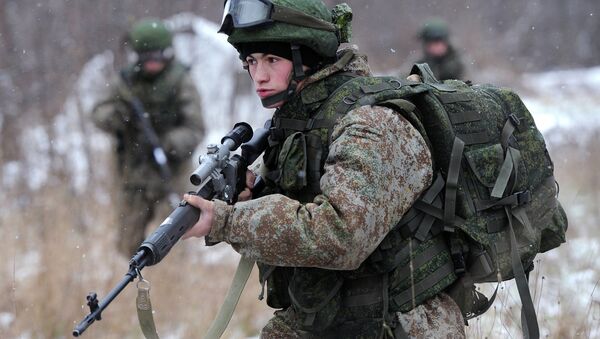Gnezdilov also said that, unlike the conventional version of the "soldier of the future" gear, the Marine variant features a “floating" bullet-proof jacket.
Dmitry Semizorov, the director of the enterprise making the Ratnik gear, earlier said that more than 120 kits had already been supplied to the Armed Forces in line with President Vladimir Putin’s order to have the Russian troops 70 percent equipped with Ratnik gear by 2020.
The first batch of Ratniks was shipped to the Armed Forces in 2015 following a series of field tests, with up to 70,000 kits expected to be supplied each year.
The latest version adds significantly to the soldier's combat efficiency and survivability, not least because it's lighter; at 24 kilos, it weighs a whole 10 kilos less than its previous version.
In addition, the soldier’s firepower is 1.2 times better and the body armor is twice stronger than its predecessor.
What makes the new version of Ratnik so special, however, is a control and communications system closely integrated with the other elements, ensuring the system’s effective use in any weather and on a round-the-clock basis.
The Ratnik outfit is mainly designed for snipers, riflemen, drivers of armored vehicles and airborne combat vehicle gunners.
The Ratnik infantry combat kit uses various types of armored helmets and bullet-proof vests, protective goggles and arms and knee pads, a self-contained heater, water filter, respirator and first-aid kit.
The third generation infantry combat kit also features various integrated biomechanical tools, including exoskeleton constructions with built-in microclimate support and a health monitoring system.
All information and targeting data is directly fed to a visor or protective goggles.
The Ratnik gear helps a soldier maintain stable radio contact with other units and receive continuously updated reconnaissance data about enemy positions and the overall situation in the combat zone, something that really makes him an intellectual fighting machine.




